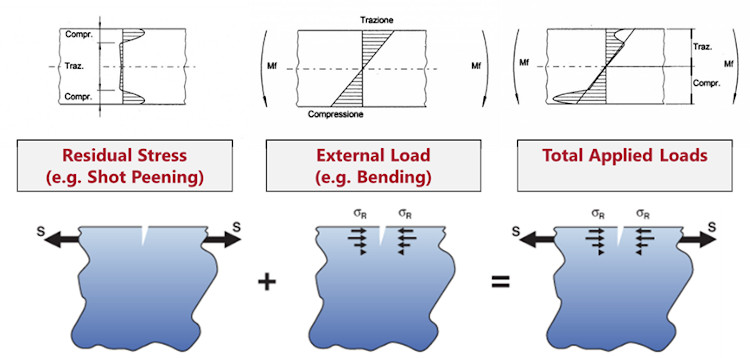

Residual stresses can result from a variety of mechanisms including inelastic ( plastic) deformations, temperature gradients (during thermal cycle) or structural changes ( phase transformation). However, unintended residual stress in a designed structure may cause it to fail prematurely. For example, laser peening imparts deep beneficial compressive residual stresses into metal components such as turbine engine fan blades, and it is used in toughened glass to allow for large, thin, crack- and scratch-resistant glass displays on smartphones. Residual stress may be desirable or undesirable. In materials science and solid mechanics, residual stresses are stresses that remain in a solid material after the original cause of the stresses has been removed. The eigenstrain-based method for the incremental hole-drilling techniqueġ6.Residual stress in a roll-formed hollow structural section causes it to gape when cut with a band-saw. Residual stresses in additive manufacturing of polymers and polymer matrix compositesġ5. Incremental hole-drilling measurement of residual stresses through the thickness of composite microelectronics componentsġ4. Reduction of residual stresses in polymer composites using nano-additivesġ3. The cured shape prediction of bistable laminatesġ2.

Understanding residual stresses in thick polymer composite laminatesġ1. Toughening and strengthening mechanisms in ceramic nanocompositesġ0. Understanding residual stresses in metal matrix compositesĩ. Understanding residual stresses in polymer matrix compositesĨ. Part II: Residual stresses in different types of compositeħ. Modeling residual stresses in composite materials Measuring residual stresses in composite materials using the slitting/crack compliance methodĦ. Measuring residual stresses in composite materials using the simulated hole drilling methodĥ. Non-destructive testing (NDT) techniques in the measurement of residual stresses in composite materials: an overviewĤ.

Destructive techniques in the measurement of residual stresses in composite materials: an overviewģ. The importance of measuring residual stresses in composite materialsĢ. There are also five new chapters on the theoretical and experimental studies of residual stresses in the composite integrated circuits residual stresses in additive manufacturing of polymers and polymer matrix composites residual stresses in metal matrix composites fabricated by additive manufacturing the eigenstrain based method for the incremental hole-drilling technique and the estimation of residual stresses in polymer matrix composites using the digital image correlation technique.Residual Stresses in Composite Materials, Second Edition, provides a unique and comprehensive overview of this important topic and is an invaluable reference text for both academics and professionals working in the mechanical engineering, civil engineering, aerospace, automotive, marine, and sporting industries. The addition of nanoparticles to the matrix of polymeric composites as a new technique for the reduction of residual stresses is also discussed.In the Second Edition of this book, each of the original chapters of the first edition has been fully updated, taking into account the latest research and new developments. The second part of the book discusses measuring residual stresses in different types of composites including polymer and metal matrix composites.

These include the simulated hole drilling method, the slitting/crack compliance method, measuring residual stresses in homogeneous and composite glass materials using photoelastic techniques, and modeling residual stresses in composite materials. There are also additional chapters on using mathematical (analytical and numerical) methods for the calculation of residual stresses in composite materials. The first part reviews destructive and non-destructive testing (NDT) techniques for measuring residual stresses. Because of the increasing demand for high-strength, lightweight materials such as composites and their wide range of applications it is critical that the residual stresses of composite materials are understood and measured correctly.The first edition of this book consists of thirteen chapters divided into two parts. They can either add to or significantly reduce material strength. The residual stress is a common phenomenon in composite materials.


 0 kommentar(er)
0 kommentar(er)
